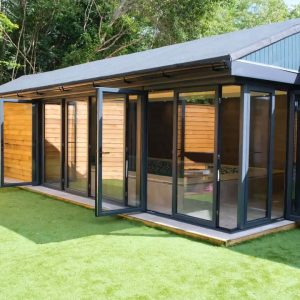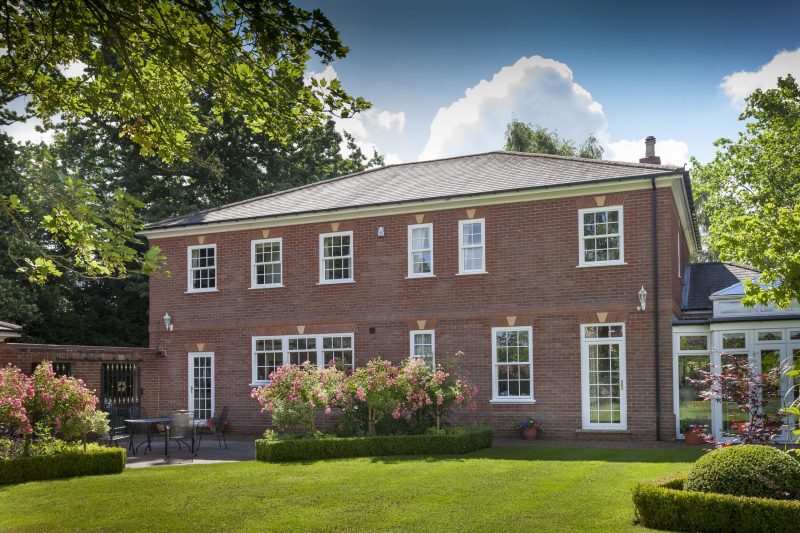Building Tomorrow: Exploring the Future Homes Standard
Share this story!
Share this post to any popular social media, email it to a friend or print it off.
As we stand on the brink of a new era marked by technological advancements and environmental consciousness, the construction industry is undergoing a transformative shift towards sustainable and energy-efficient housing. At the forefront of this movement is the “Future Homes Standard,” a visionary initiative that seeks to redefine how we build and inhabit our homes.
The initial consultation on the new Future Homes Standard opened on the 13th of December 2023, and will run until the 6th of March 2024. The purpose of a consultation is to collect responses from parties affected by the Standard, which will then be analysed by representatives of the Government and potentially drive any amendments to the legislation. The Future Homes Standard is expected to come into force in 2025, followed by a 12-month transitional period.

Understanding the Future Homes Standard
The Future Homes Standard is a set of guidelines and regulations introduced by governments to elevate residential buildings’ energy efficiency and sustainability. While specific details may vary between countries, the overarching goal is to reduce carbon emissions, decrease energy consumption, and create healthier living environments.
Key Components
- Energy Efficiency
- Renewable Energy Integration
- Technological Innovation
- Health and Wellbeing
Energy Efficiency: The cornerstone of the Future Homes Standard is the emphasis on energy efficiency. This involves implementing cutting-edge technologies and design principles to minimize energy consumption and optimise performance. From advanced insulation materials to smart home systems, every aspect is carefully considered to create homes that require less energy for heating, cooling, and overall operation.
Renewable Energy Integration: To further reduce the carbon footprint, the Future Homes Standard encourages the integration of renewable energy sources. Solar panels, wind turbines, and other sustainable technologies are becoming commonplace in the design and construction of homes, paving the way for self-sufficient and eco-friendly living.
Technological Innovation: The standard also promotes the use of innovative technologies to enhance homes’ overall efficiency and functionality. Smart home systems, energy-efficient appliances, and advanced building management systems provide a seamless and sustainable living experience.
Health and Wellbeing: Beyond energy considerations, the Future Homes Standard strongly emphasises creating healthier living environments. Improved indoor air quality, natural light optimisation, and the use of eco-friendly materials contribute to homes that prioritise the well-being of their occupants.
Benefits of the Future Homes Standard
- Environmental Impact:
- Cost Savings
- Market Transformation
Environmental Impact: By adhering to the guidelines set by the Future Homes Standard, builders and homeowners alike contribute to reducing greenhouse gas emissions and the overall environmental impact of the construction industry.
Cost Savings: While the initial investment in energy-efficient technologies and sustainable building practices may seem significant, the long-term benefits are substantial. Homeowners can enjoy reduced energy bills, and society benefits from decreased reliance on non-renewable resources.
Market Transformation: The Future Homes Standard drives a paradigm shift in the housing market, influencing consumer preferences and industry practices. Builders and developers who embrace these standards will likely gain a competitive edge in a market increasingly shaped by sustainability considerations.
Proposed Changes to Windows and Doors Regulations
The proposed performance requirements for windows and doors closely resemble standards introduced in 2021. The decision to keep them essentially the same came as a surprise to many businesses in our industry. Conversations surrounding the Future Homes Standards led many experts to believe that notional u-values as low as 0.80 could be the reality from 2025. However, according to the argumentation outlined in the consultation, this may not be the case. It appears the notional (‘desired’) u-value for windows and doors will continue to sit at 1.2, with a limiting (‘worst case scenario’) u-value of 1.6.
To give you an idea of what Quickslide can offer, our uPVC Casement Window now comes with a u-value of 1.2 as standard, and our flagship product, the uPVC Sash Window, is ‘A’ rated as standard with a u-value of 1.4. Our R & D Teams are looking to incorporate energy-efficient components into the fabrication process of our sash windows, which should enable us to reach a low u-value of 1.2 in due course.
Challenges and Opportunities
While the Future Homes Standard presents a promising vision for the future, challenges such as initial costs, education, and regulatory compliance still need to be addressed. Governments, industry stakeholders, and communities must collaborate to overcome these obstacles and unlock the full potential of sustainable and energy-efficient housing.
In terms of windows and doors, the challenges are minor than expected. Numerous extruders, fabricators, glass unit manufacturers, and hardware suppliers suspected that the Future Homes Standard would suggest a move towards triple glazing to achieve u-values as low as 0.80. However, it seems the Government does not think we’re ready for this move yet or that the benefits of the move to triple glazing will be greater than the supply implications on the industry.
Conclusion
The Future Homes Standard represents a crucial step towards a more sustainable and environmentally conscious future. As we continue to innovate and refine our approach to housing, this standard serves as a guiding beacon, ushering in an era where homes are not just structures but integral components of a greener, healthier, and more sustainable world. The impact on the windows and doors industry is minimal, and by choosing a manufacturer who’s got the paperwork in order, meeting the performance requirements set out in the Future Homes Standard should be plain sailing.

You May Also Be Interested In:
- Embracing the Grey Colour Trend for Windows
- Top Trending Window Styles
- Open Up a World of Possibilities with Quick-Glide
- 5 Innovative Sash Window Concepts
- Exploring the Top 3 Home Improvements for 2024 with Quickslide
Please note, our news articles are relevant and accurate at the time of release, but as technical developments dictate, and times goes by the information in this article may no longer be applicable. If you have questions, please contact us using our online contact form or call us on 03332 412 240.



